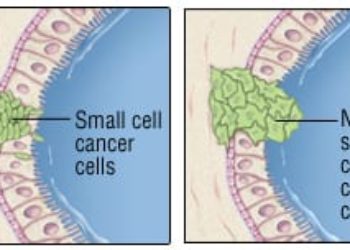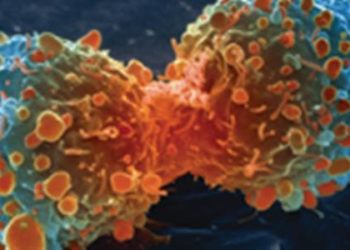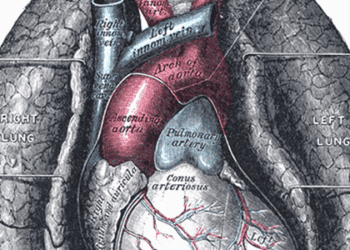Patient Basics: Small Cell Lung Cancer
Originally published by Harvard Health.
What Is It?
Small cell cancer is a type of lung cancer.
Most small cell cancers start in the lung but they can first occur elsewhere in the body—for example in the bowel, bladder or prostate. Small cell cancers grow fast and spread quickly, so they are hard to cure. Small cell lung cancer is sometimes called oat cell cancer because the abnormal cells look like oats under the microscope.
Blood and lymph moves through the lungs as it circulates throughout the body. So it is very easy for small cell cancer cells to spread very quickly. This kind of cancer can spread to any organ, but most commonly affects the brain, liver, adrenal glands, and bone.
In most cases, by the time it is discovered, it has already reached other parts of the body. Often small cell cancers are in other organs even before it shows up on imaging tests. That’s why it can’t be cured simply by removing the lung tumor. The standard treatment includes chemotherapy with or without radiation, but not surgery.
Small cell cancers can sometimes act like miniature glands. They can secrete a range of chemicals and hormones. These substances can make a person sick in and of themselves. Doctors call this paraneoplastic (par-uh-knee-oh-plas-tick) disorder or phenomenon.
Sometimes it is the symptoms of paraneoplastic disorder that make doctors suspect cancer. Examples include:
- Abnormal mineral levels, such as low blood sodium or potassium
- High blood sugars in someone who is not diabetic
- Unusual types of muscle weakness
- Atypical neurological symptoms
Small cell lung cancers often grow very close to the largest and most important blood vessels in the chest. It is not uncommon for a large vein called the superior vena cava to become blocked by a small cell tumor. This hinders blood flow from the head and brain back to the body. This problem is called superior vena cava syndrome and is a medical emergency. Symptoms include headache, a red face, a bloated look to the head, and bulging veins in the front of the chest and neck.
Symptoms
A range of symptoms can suggest small cell lung cancer:
- A persistent cough
- Coughing up blood
- Shortness of breath or wheezing
- Unexplained weight loss or loss of appetite
- Fatigue
- Difficulty swallowing
- Pain in the chest, shoulder, or arm
- Bone pain
- Hoarseness
- Headaches, confusion, or seizures
- Swelling of the face, neck or arms
- Noticeable or bulging veins on the chest and neck
Diagnosis
Lung cancer often is discovered on a chest x-ray, where it appears as a gray or whitish area. Other tests, such as computed tomography (CT), magnetic resonance imaging (MRI), and PET scanning can be helpful in determining:
- the size, shape and location of the tumor
- if and where the cancer has spread
- the best place to take samples of the tumor.
One way to check for small cell lung cancer is to examine mucus from the lungs under a microscope. This test requires that a person cough very hard to bring up plegm. Doctors can also draw fluid from between the lung and chest wall to check for abnormal cells.
Doctors can also take samples of tissue from lymph nodes or suspicious masses using a thin needle. Another test common test is called bronchoscopy. Doctors thread a slender tube with a camera through the mouth into the lungs. Once in place, she or he can look directly at the tumor and take tissue samples.
Because small cell lung cancer spreads so quickly and widely, it is important to check other parts of the body as well. Tests might include a bone scan, bone marrow biopsy, CT or MRI scan of the head and brain. Additional biopsies can help determine how the cancer is spreading.
Small cell lung cancer has two stages:
- Limited cancer occurs only in one lung and nearby lymph nodes.
- Extensive cancer has spread to both sides of the chest or beyond the chest.
For limited stage cancer, doctors may recommend radiation therapy in addition to chemotherapy.
Researchers are studying the genes associated with the development of small cell cancer of the lung. These discoveries may help develop new treatments that target these specific abnormalities.
Expected Duration
As with any cancer, even if small cell cancer disappears (goes into remission), there is a chance it can come back.
Prevention
Smoking greatly increases the changes of developing any kind of lung cancer. About 90% of people who get small cell lung cancer are either current or past smokers. Quit smoking and avoid secondhand smoke. Right now, there is no reliable and effective screening test for lung cancer. So it is hard to catch these cancers early. Because small cell lung cancers spread so quickly, it is difficult to know whether early detection will increase the chance of curing the disease.
Treatment
Small cell lung cancer almost always has spread outside the lungs by the time it is discovered. So removing the tumor or lung won’t cure or curb the cancer and puts the patient through a serious and risky operation for no good reason.
Even when all the scans look okay, small cell lung cancer cells often lurk areas cannot be removed with surgery. That’s why chemotherapy (with or without radiation) is the main treatment. The earlier stage allows for more intense and effective radiation therapy within a small area.
When possible, patients alternate cycles of radiation therapy and chemotherapy. An older person or someone with other medical problems may not tolerate intensive chemotherapy or high-dose radiation. These patients can receive lower dose treatments extended over a longer period of time.
Small cell lung cancer frequently spreads to the brain, even if there are no spots seen on CT scan or MRI of the brain. Some doctors will advise radiation to the brain to wipe out microscopic cancer cells.
In people with extensive-stage cancer, chemotherapy and/or radiation is used primarily to relieve symptoms such as bone pain.
It is extremely rare that small cell lung cancer is confined to the lungs. But when that is the case, doctors will remove the tumor surgically. This works best when the tumor is at the edges of the lung. Chemotherapy may also be used.
When To Call a Professional
If you notice any signs of small cell lung cancer, see your health care professional as soon as possible.
Prognosis
Unfortunately, because small cell lung cancer grows and spreads so rapidly, the outlook is poor. The 5-year survival rate is about 6%. It is higher when the doctors find and treat the disease in the earlier, limited stage. Even when treatment is successful initially, there is a good chance the cancer will return, often outside the lungs.
Additional Info
National Cancer Institute (NCI)
U.S. National Institutes of Health
Public Inquiries Office
Building 31, Room 10A03
31 Center Drive, MSC 8322
Bethesda, MD 20892-2580
Phone: 301-435-3848
Toll-Free: 1-800-422-6237
TTY: 1-800-332-8615
http://www.nci.nih.gov/
American Cancer Society (ACS)
1599 Clifton Road, NE
Atlanta, GA 30329-4251
Toll-Free: 1-800-227-2345
http://www.cancer.org/
American Lung Association
61 Broadway, 6th Floor
New York, NY 10006br />Phone: 212-315-8700
Toll-Free: 1-800-548-8252
http://www.lungusa.org/
National Heart, Lung, and Blood Institute (NHLBI)
P.O. Box 30105
Bethesda, MD 20824-0105
Phone: 301-592-8573
TTY: 240-629-3255
Fax: 301-592-8563
http://www.nhlbi.nih.gov/
U.S. Environmental Protection Agency (EPA)
Ariel Rios Building
1200 Pennsylvania Ave., N.W.
Washington, DC 20460
Phone: 202-272-0167
http://www.epa.gov/
National Institute for Occupational Safety and Health
4676 Columbia Parkway
Mail Stop C-18
Cincinnati, OH 45226
Toll-Free: 1-800-356-4674
Fax: 513-533-8573
http://www.cdc.gov/niosh/




